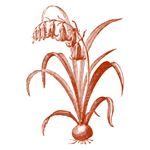by Carole Duff
For most women, the onset of menopause—the end of menstruation—marks the end of a mission, that is, the opportunity to bear children. Menarche, the first occurrence of menstruation, is often a girl’s first indication that she may have this special role in mankind. Her blood-letting is a sign of fertility and is different from boys’ initiation rites.
Menarche happened for me at the end of eighth grade, and menopause in my early fifties: forty years of monthly discomfort, except during two pregnancies. I didn’t miss my periods when they sputtered to an end, though I enjoyed raising children and almost everything that went with it. By the time I entered menopause, I was happy to trade PTA meetings, recitals, and my teenagers’ vampire-late hours for Bible study, retreats, and early morning devotionals. Ironically, it wasn’t until my blood-flowing ceased that the truth was revealed to me.
The great story is about the blood.
In Things Hidden: Scripture as Spirituality, Franciscan Richard Rohr states that there are three bookmarks or code words in scripture to communicate God’s transformative message: “…we have water, the first invitation to an inner life of union. Then we have blood, which symbolizes the difficult price of union. Finally, we have bread, the ongoing feeding of that union.”
The invitation of water appears throughout the Old Testament and into the New. In the Gospel of John, when Jesus meets a Samaritan woman at the well, He says to her, “If you knew the gift of God and who it is that asks you for a drink, you would have asked him and he would have given you living water.” (John 4:14) Later, on the last day of the Festival of Tabernacles, Jesus stood and said, “Let anyone who is thirsty come to me and drink. Whoever believes in me, as Scripture has said, rivers of living water will flow from within them.” (John 7:37-38, likely referencing Ezekiel and Joel)
Living water is a comforting symbol, as is bread, the Old Testament’s manna. Jesus said, “I am the bread of life,” in the Gospel of John. In fact, Jesus used seven “I am” statements in John, all comforting:
- “I am the bread of life” John 6:35
- “I am the light of the world” John 8:12
- “I am the gate” John 10:9
- “I am the good shepherd” John 10:11
- “I am the resurrection and the life” John 11:25
- “I am the way, the truth and the life” John 14:6
- “I am the true vine” John 15:5
Jesus never said, “I am the blood,” because He would shed His blood for us. According to Rohr, blood “…invariably symbolizes the transformative experience, the dying before you die that so many religions speak of. The necessary price of newness is always death to oldness. Religion is never afraid to talk about blood-letting, dying, loss of unneeded baggage, letting go—and it is always painful.”
Menopause set me to thinking about what came before, what will come after, and what remains to be done. I discovered the discomfort of first-half-of-life menstruation was nothing compared to second-half-of-life’s pain of letting go. The old me had to die. Death to the person who shed blood every month and gave birth twice. Death to the person who made zillions of teaching and parenting decisions, drove endless carpool miles, and baked uncounted dozens of cookies. Death to the self-centered person who sacrificed in order to gain the illusion of control, success, and safety.
By shedding the old me, I came to realize that faith is not about the things of this world. It’s about rivers of living water, the bread of life, the light, the way, the truth.
And the blood of the great “I am.”

Carole Duff is a veteran teacher, flutist, and writer of narrative nonfiction. She posts weekly to her long-standing blog Notes from Vanaprastha, has written for The Perennial Gen and Brevity’s Nonfiction Blog, and is working on a book titled Wisdom Builds Her House: A Memoir about Love, Faith, and Forgiveness. Carole lives in Virginia’s Blue Ridge Mountains with her husband Keith Kenny, also a writer, and two large, overly-friendly shelter dogs.
Cover photo by Kinga Cichewicz on Unsplash





I feel the same. The letting go is the hardest part. Menopause came over eight years ago, and the emptying of the house of all six kids and then an unexpected relocation across country stripped it all away. I think the letting go may be the final lesson. It may take the rest of my lifetime, for it involves not only family life but health, a functional body, loss of control of my body, and the final slipping away into Jesus’ arms. The may be The Lesson of the culmination of a life.
Thank you for your comment, Melinda. I think we all struggle with “this life” letting go. As I watch my 96-year-old mother slip away now, I think of The Lesson.
A very insightful post, Carole. I had to smile at your title. “The Gift of Menopause” for me has been hot flashes! Seriously, the letting go of those decades as child-bearer and mother (of three) was a bit poignant. But I soon adjusted to the empty (more peaceful, less stressful) nest, the freedom to have coffee or lunch with a friend, the full use of “my” car, etc. And praise God he created grandchildren!! Every metamorphosis we undergo has its advantages and disadvantages.
Thank you for your comment, Nancy. I, too, find it hard to look upon the changes in life as “gifts”—I still get hot flashes. Yet, when I read your posts, I think of the wisdom that comes with age and how elders can mentor others. And the blessings of grandchildren.